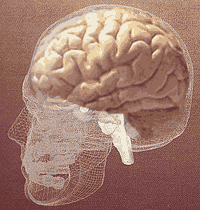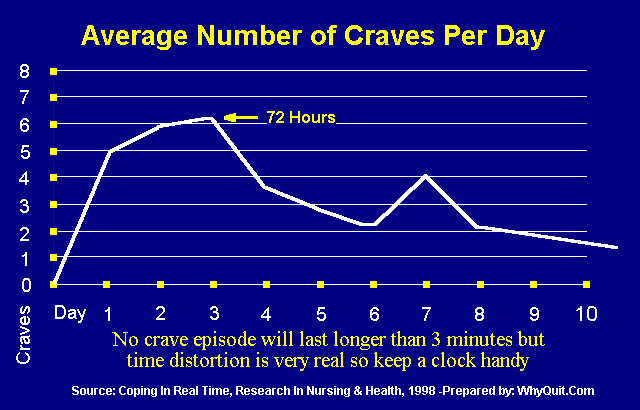Share your quitting journey
- EX Community
- Conversations
- Journals / Blogs
- Nicotine Addiction 101
Nicotine Addiction 101
- Subscribe to RSS Feed
- Mark as New
- Mark as Read
- Bookmark
- Subscribe
- Printer Friendly Page
- Report Inappropriate Content
Nicotine is the tobacco plant's natural protection from being eaten by insects. Its widespread use as a farm crop insecticide is now being blamed for killing honey bees. A super toxin, drop for drop it is more lethal than strychnine or diamondback rattlesnake venom and three times deadlier than arsenic. Yet amazingly, by chance, this natural insecticide's chemical signature is so similar to the neurotransmitter acetylcholine that once inside the brain it fits a host of chemical locks permitting it direct and indirect control over the flow of more than 200 neuro-chemicals, most importantly dopamine.
What Are Dopamine Pathways?
Brain dopamine pathways
What is dopamine? It's hard to understand nicotine addiction, or any form of drug addiction for that matter, without a basic understanding of the brain's primary motivation neurotransmitter, dopamine. The brain's dopamine pathways serve as a built-in teacher. It uses a desire, yearning or wanting sensation to get our attention when it wants to pound home a survival lesson necessary to keep us humans alive and thriving.
Have you ever wondered why it's so hard to go without eating, to actually starve yourself to death, or for that matter, to die of thirst? Why do we seek acceptance by our peers, want companionship, and desire a mate or sexual relations? Why do we feel anxiety when bored and an "aaah" sense of relief when we complete a task?
Remember the very first time your parents praised you for keeping your coloring between the lines? Remember the "aaah" sensation? That was dopamine, the satisfaction of your wanting to succeed. The deep inner primitive brain (the limbic mind) is hard-wired, via dopamine pathways, to keep us drinking liquids, fed, together (there's "safety in numbers"), while achieving and reproducing.
When we feel hunger our dopamine pathways are being stimulated, teasing us with anticipation "wanting" for food. If kept waiting, the anticipation may build into urges or even full-blown craves. Each bite we eat further stimulates dopamine flow until stomach peptides at last tell the brain we're full and wanting becomes satisfied.
But our brain doesn't stop with simply creating and satisfying wanting associated with species survival events such as eating, drinking liquids, bonding, nurturing, accomplishment and sex. It makes sure that we don't forget them, that in the future we pay close attention to these activities.
The brain associates and records how each particular wanting was satisfied in the most durable, high-definition memory the mind may be capable of generating. It does so by hard-wiring dopamine pathway neuro-transmissions into our conscious memory banks (the prefrontal cortex), where each is linked to the event that satisfied dopamine pathway wanting, hunger and yearning.
Drug Addiction's Common Thread
Now ponder this. What would happen if, by chance, an external chemical existed that once introduced into the bloodstream was small enough to pass and cross through the blood/brain barrier (a protective filter), and once inside the brain were somehow able to activate and turn on our mind's dopamine pathway circuitry? Could that chemical hijack the mind's priorities teacher? If so, how long would it take before continuing chemical use resulted in the person becoming totally yet falsely convinced that using more of the chemical was as important as eating food?
 Hunger for food, hunger for nicotine. Food craves, nicotine craves. "Aaah" wanting satisfaction while taking bites, "aaah" wanting satisfaction while replenishing nicotine reserves. Welcome to the addict's world of nicotine normal, a world built on lies. For if we don't eat food we die, while if we stop using nicotine we thrive.
Hunger for food, hunger for nicotine. Food craves, nicotine craves. "Aaah" wanting satisfaction while taking bites, "aaah" wanting satisfaction while replenishing nicotine reserves. Welcome to the addict's world of nicotine normal, a world built on lies. For if we don't eat food we die, while if we stop using nicotine we thrive.
Clearly, I've vastly oversimplified an extremely complicated topic. While dopamine pathway stimulation is the common thread between chemical addictions (including cocaine, heroin, meth, nicotine and alcoholism), my simplified explanation does not explain why users initially continue using the drug prior to a growing pile of dopamine pathway high-definition use memories begging them to use more. Nor does it explain why most regular nicotine users get hooked but not all, or why quitting is often accompanied by withdrawal symptoms.
Although enhanced dopamine flow is associated with all chemical addictions, each chemical differs in how it triggers or enhances stimulation, how long stimulation lasts, and each chemical's ability to produce a different "high" sensation by interacting with other neuro-chemicals and pathways.
Aside from enhancing dopamine flow, nicotine is a legal central nervous system stimulant that activates the body's fight or flight response. This results in an alert stimulated high, which allows us nicotine addicts to feel different or even superior to illegal drug addicts who fill the world's prisons. This despite the fact that this year addiction to smoking nicotine is expected to kill 17 times as many Americans as all illegal drugs combined.
While nicotine stimulates the nervous system, alcohol has the opposite effect in actually depressing it and slowing normal brain function. Heroin's dopamine stimulation is accompanied by an endorphine high, resulting in a short yet intense numbing or analgesic effect. Cocaine's high is a sense of stimulated euphoria associated with delaying normal clean-up (re-uptake) of multiple neurotransmitters (dopamine, serotonin and nor-adrenaline), while methamphetamine is the maximum speed stimulant.Again, the common thread between each of these addictions is that the brain's dopamine pathways were taken hostage and left the drug addict totally yet falsely convinced that continuing drug use was important to their survival, that their drug gave them their edge, helped them cope and that life without it would be horrible.
What we nicotine addicts could not see was that our beliefs and thinking about that next fix were unworthy of belief. Once hooked it was too late. Dopamine pathway generated pay-attention memories were so vivid and durable that they quickly buried all remaining memory of life without nicotine. Gone were our pre-addiction memories of the calm, quiet and beauty of the mind we once called home.
It's why getting off of drugs is so difficult. It's why half of the smokers we see each day will eventually smoke themselves to death. While their friends and loved ones scream the insanity of their continued self-destruction, their brain dopamine pathways scream even louder that continuing drug use is as important as life itself. Who should they believe, their limbic mind's begging for that next fix, or the outside world's begging for them to stop?
Nicotine Dependency a Mental Illness and Permanent Disease
 I'm sorry but there's simply no nice way to say this. Nicotine dependency, like alcoholism, is a real mental illness and disease. While able to fully and comfortably arrest our chemical addiction, there is no cure. It's permanent. Like alcoholism there's just one rule. Once we're free, just one, using just once and we have to go back. You see, it isn't a matter of how much willpower we have, but how the brain's priorities teacher teaches, how nerve and memory cell highways that recorded years of nicotine feedings have left each of us wired for relapse.
I'm sorry but there's simply no nice way to say this. Nicotine dependency, like alcoholism, is a real mental illness and disease. While able to fully and comfortably arrest our chemical addiction, there is no cure. It's permanent. Like alcoholism there's just one rule. Once we're free, just one, using just once and we have to go back. You see, it isn't a matter of how much willpower we have, but how the brain's priorities teacher teaches, how nerve and memory cell highways that recorded years of nicotine feedings have left each of us wired for relapse.
So why are some people social smokers able to take it or leave it, while the rest of us got hooked? Referred to as "chippers," they probably account for less than 10% of all smokers. Jealous? If so and still using don't worry, it's normal. That's what enslaved brains tend to dream about, to want to become like them, to control what for us is uncontrollable.
Being immune to addiction is believed to at least in part be related to genetics. But with up to 90% of daily users hooked solid, spending millions studying nicotine dependency genetics is almost laughable. Before feeling too sorry for yourself, imagine what it's like to be an alcoholic and forced to watch roughly 90% of drinkers do something that you yourself cannot, to turn and walk away. We only have to watch the 10% who are chippers.
Then again, we were each once chippers too, at least for our first couple of cigarettes or oral tobacco uses. There was no urge, desire, crave, hunger or wanting for those first couple of smokes. Nicotine stimulated our nervous system without our brain begging us to come back and do it again. There was no dopamine "aaah" relief sensation, as nothing was missing and nothing in need of replenishment. But that was about to change. Most of us became hooked while children or teens. What none of us knew prior to that first hit of nicotine was how extremely addictive smoking it was. Roughly 26% of us started losing control over continued smoking after just 3 to 4 cigarettes, rising to 44% after smoking 5 to 9.
What we didn't then know was that within ten seconds of that very first puff, that up to 50% of our brain's dopamine pathway acetylcholine receptors would become occupied by nicotine, or that prior to finishing that first cigarette that nicotine would saturate almost all of them.
No one told us that once saturated, that continued smoking would cause our receptors to become de-sensitized, which would somehow cause our brain to grow or activate millions of extra receptors, a process known as up-regulation.
Every two hours the amount of nicotine remaining in our bloodstream declined by half (known as nicotine's elimination half-life). At some point in the process, continued stimulation, de-sensitization and up-regulation left our brain wanting and begging for more. An addiction was born as our brain was now wired to function with gradually increasing amounts of nicotine. Not only does nicotine stimulate the release of dopamine within ten seconds of a puff, smoking it suppresses MAO, a dopamine clean-up enzyme. Suppressing MAO allows wanting's satisfaction to linger far longer than a natural release, such as the short lived sensations felt when eating food or quenching thirst.
 One cigarette per day, then two, then three, the longer we smoked nicotine, the more receptors that became saturated and desensitized, the more grown, and the more nicotine needed to satisfy resulting "want" for replenishment.
One cigarette per day, then two, then three, the longer we smoked nicotine, the more receptors that became saturated and desensitized, the more grown, and the more nicotine needed to satisfy resulting "want" for replenishment.
As America's leading drug addiction expert puts it, the NIDA's Dr. Nora Volkow, drug addiction is a disease where brain changes translate into an inability to control drug intake. These drug induced brain modifications then signal the brain with a message that's equivalent to "when you are starving," the signal to "seek food and eat it," that the drug is "necessary to survival," that dopamine pathways ensure "long-lasting memory of salient events."
Our priorities hijacked, our mental disorder having left us totally convinced that that next nicotine fix is as important as life itself, where do we turn once we awaken and realize that we've been fooled?
The Good News
The good news is that it's all a lie, that drug addiction is about living a lie. It's hard work being an actively feeding drug addict, and comfortable  again being you. The good news is that knowledge is power, that we can each grow smarter than our addiction is strong, that full recovery is entirely do-able for all. In fact, today there are more ex-smokers in the U.S. than smokers.
again being you. The good news is that knowledge is power, that we can each grow smarter than our addiction is strong, that full recovery is entirely do-able for all. In fact, today there are more ex-smokers in the U.S. than smokers.
While the first few days may feel like an emotional train wreck, beyond them, with each passing day the challenges grow fewer, generally less intense and shorter in duration. Recovery leads to a calm and quiet mind where addiction chatter and wanting gradually fade into rarity, where the ex-user begins going days, weeks or even months without once wanting for nicotine.
Recovery is good, not bad. It needs to be embraced not feared. The good news is that everything done while under nicotine's influence can be done as well or better without it.
"Our brain has tremendous capacity for recovery," says Dr. Volkow. But the addicted person "has to take responsibility that they have a disease."While no cure, there is only one rule that if followed provides a 100% guarantee of success in arresting it -- no nicotine today.
Successful Recovery
Each year, more successful ex-users quit cold turkey than by all other methods combined. Their common thread? No nicotine, just one hour, challenge and day at a time. The common element among all who relapsed? A puff of nicotine.
On a conscious level, roughly 70% of daily smokers want to stop. But few understand how and even fewer appreciate that they're dealing with a permanent priorities disorder and disease of the mind. Instead, they invent justifications and rationalizations to explain why they must smoke that next cigarette.
Subconsciously, you've established nicotine use cues. Those cues trigger urges or craves upon encountering a specific time, place, person, situation or emotion during which you've trained your mind to expect a new supply of nicotine. But the catalyst and foundation for both conscious rationalizations and subconscious conditioning is your underlying chemical dependency.
Trapped between nicotine's two-hour elimination half-life and a gradually escalating need to smoke harder or more, the dependent smoker faces five primary recovery hurdles: (1) appreciation for where they now find themselves, (2) reclaiming their hijacked dopamine pathways, (3) breaking and extinguishing smoking cues, (4) abandoning smoking rationalizations, and (5) relapse prevention.
The Law of Addiction
Most quitting literature suggests that it normally takes multiple failed quitting attempts before the user self-discovers the key to success. What they fail to tell you is the lesson eventually learned, or that it can be learned and mastered during the very first try.
Successful recovery isn't about strength or weakness. It's about a mental disorder where by chance our dopamine pathway receptors have eight times greater attraction to a nicotine molecule than to the receptor's own neurotransmitter. We call it the "Law of Addiction" and it states, "Administration of a drug to an addict will cause re-establishment of chemical dependence upon the addictive substance."
 Roughly half of relapsing quitters report thinking that they thought they could get away with using just once. The benefit of fully accepting that we have a true chemical dependency and permanent priorities disease can't be overstated. It greatly simplifies recovery's rules while helping protect against relapse.
Roughly half of relapsing quitters report thinking that they thought they could get away with using just once. The benefit of fully accepting that we have a true chemical dependency and permanent priorities disease can't be overstated. It greatly simplifies recovery's rules while helping protect against relapse.
Key to arresting our disease is obedience to one simple concept, that "one is too many and a thousand never enough." There was always only one rule, no nicotine just one hour, challenge and day at a time.
Navigating Withdrawal and Reclaiming Hijacked Dopamine Pathways
Like clockwork, constantly falling nicotine reserves soon had hostage dopamine pathways generating "want" for more. Sensing that "want" thousands of times per year, how could we not expect to equate quitting 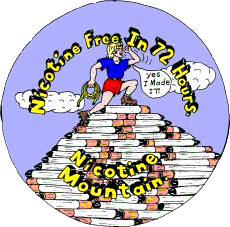 to starving ourself to death? Again, the essence of drug addiction is about dependency quickly burying all memory of our pre-dependency self. The first step in coming home and again meeting the real us is emptying the body of nicotine.
to starving ourself to death? Again, the essence of drug addiction is about dependency quickly burying all memory of our pre-dependency self. The first step in coming home and again meeting the real us is emptying the body of nicotine.
It's surprisingly fast too. Cut by half every two hours, our mind and body become 100% nicotine-free within 72 hours of ending all use. Extraction complete, peak withdrawal now behind you, true healing can now begin. While receptor sensitivities are quickly restored, down-regulation of the number of receptors to levels seen in never-users may takeup to 21 days. But within two to three weeks your now arrested dependency is no longer doing the talking. You're beginning to sense the truth about where you've been.It's critical during early withdrawal to not skip meals, especially breakfast. Attempting to do so will likely cause blood sugar levels to plummet, making recovery far more challenging than need be.
As a stimulant, nicotine activates the body's fight or flight response, 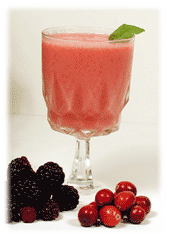 feeding the addict instant energy by pumping stored fats and sugars into the bloodstream. It allowed us to skip breakfast and/or lunch without experiencing low blood sugar symptoms such as feeling nervous or jittery, trembling, irritability, anxiousness, anger, confusion, difficulty thinking or an inability to concentrate. Eat little, healthy and often.
feeding the addict instant energy by pumping stored fats and sugars into the bloodstream. It allowed us to skip breakfast and/or lunch without experiencing low blood sugar symptoms such as feeling nervous or jittery, trembling, irritability, anxiousness, anger, confusion, difficulty thinking or an inability to concentrate. Eat little, healthy and often.
Also, heavy caffeine users need to know that (as strange as this sounds), nicotine doubles the rate by which caffeine is eliminated from the bloodstream. One cup of coffee, tea or one cola may now feel like two. While most caffeine users can handle a doubling of intake, consider a modest reduction of up to one-half if feeling anxious or irritable after using caffeine.
If your diet and health permit, drink some form of natural fruit juice for the first three days. Cranberry juice is excellent. It will aid in stabilizing blood sugar while accelerating removal of the alkaloid nicotine from your bloodstream.
One caution. While we need not give-up any activity except nicotine use, use extreme caution with early alcohol use as it is associated with roughly 50% of all relapses
.Extinguishing Use Conditioning
 Embrace recovery don't fear it. Why fear a temporary journey of re-adjustment that transports us to a point in time where we're going days, weeks and eventually months without wanting to use nicotine?
Embrace recovery don't fear it. Why fear a temporary journey of re-adjustment that transports us to a point in time where we're going days, weeks and eventually months without wanting to use nicotine?
Each cue driven crave episode presents an opportunity to extinguish additional conditioning and reclaim another aspect of life. We may have trained our mind to expect nicotine during stressful events, when walking in the back yard, while
driving a car, talking on the phone or upon encountering another user. Attempting these activities after stopping may generate a short yet possibly powerful crave episode.
Success in moving beyond each episode awards the new ex-user return of another slice of a nicotine-free life, a surprising sense of calm during crisis, return of their yard, car, phone or friends. But be sure and look at a clock during craves as cessation time distortion can combine with fear or even panic to make a less than 3 minute episode feel much longer.
Research suggests that the average quitter experiences a maximum of 6 crave episodes per day on the third day of recovery, declining to about 1.4 per day by day ten. If each crave is less than 3 minutes and the average quitter experiences a maximum of 6 on their most challenging day, can you handle 18 minutes of challenge?
But what if you're not average or normal. What if, instead, you've created twice as many nicotine use cues as the "average" addict? Can you handle 36 minutes of significant challenge if it means arresting your dependency, improving your mental and physical health and the prospect of a significant increase in life expectancy? Absolutely!
Abandonment of Use Rationalizations
Acceptance that drug addiction is a mental disorder and that we're just as addicted as the alcoholic, heroin or meth addict destroys the need for nicotine use rationalizations. Try this. List your top ten reasons for using. Now go back and cross off all the reasons except the truth, that hijacked pay attention pathways kept us wanting for more.
If a smoker, you didn't continue destroying your body's ability to receive and transport life giving oxygen because you wanted to. You did so because a rising tide of withdrawal anxieties would begin to hurt when you didn't.
 Contrary to convenience store tobacco marketing, we did not smoke for flavor or taste. In fact, there are zero taste buds inside human lungs. Contrary to hundreds of store "pleasure" signs, drug addiction isn't about seeking pleasure but about satisfying a brain "wanting" disorder.
Contrary to convenience store tobacco marketing, we did not smoke for flavor or taste. In fact, there are zero taste buds inside human lungs. Contrary to hundreds of store "pleasure" signs, drug addiction isn't about seeking pleasure but about satisfying a brain "wanting" disorder.
Our mind's priorities disorder had most of us convinced that we liked or even loved smoking. But what basis did we have for making honest comparisons? Try hard to recall the calm inside your mind prior to getting hooked, going days, weeks and months without once having an urge or crave to smoke. You can't do it, can you? So what basis exists to make honest comparisons about liking the addicted you more than the free you? It isn't that we liked smoking but that we didn't like what happened when we didn't smoke, the onset of withdrawal.
Most of us convinced ourselves that we smoked to relieve stress when in reality our addiction intensified it. While nicotine is an alkaloid, stress, alcohol and vitamin C are each acid generating events that accelerate elimination of nicotine from the bloodstream. Stressful situations would often induce early withdrawal, forcing immediate nicotine replenishment. Replenishment's temporary silencing of our disease left us falsely convinced that smoking had relieved our stress, when all it had relieved was nicotine's absence and the onset of early withdrawal.Think about it. Once we finished tanking-up with a new supply of nicotine and had satisfied our dependency, the car's tire was still flat, or the bad news was still bad. One of the greatest recovery gifts of all is an amazing sense of calm during crisis, as we're no longer adding nicotine withdrawal atop every stressful event.
Probably the most destructive rationalization of all is pretending that all we suffer from is a nasty little habit, that like using a cuss word now and then, that we can smoke just once now and then after quitting and get away with it.
Why tease yourself? Willpower cannot stop smoked, chewed or sucked nicotine from arriving in the brain. Ask yourself, how many marathon runners have the endurance to run two marathons in a row? While we may walk away from one hit and relapse thinking we've gotten away with it, as sure as the sun rises in the sky our disease will soon be begging for more. We can no more take a hit than an alcoholic can take a sip.
"But now just isn't the right time," you say? Frankly, there will never be a perfect time to arrest mental illness. In fact, planning and putting it off until some future date actually breeds needless anticipation anxieties that diminish the odds of success. As backwards as this sounds, two recent studies, one in the UK and the other in the US, found that unplanned attempts are twice as successful as planned ones. The next few minutes are all within our ability to control and each is entirely do-able.
One concern Dr. Volkow hears is that by teaching users that they have a chemical addiction that's both a mental illness and disease, that some will use it as an excuse for avoiding responsibility in arresting it. But as she notes, does a person who's told that they have cancer or heart disease pretend helplessness, or do they instead fight to save and extend their life?
Nicotine dependency recovery can be the greatest personal awakening we've ever known. Destruction of needless fears allow us to savor the beauty unfolding before us. No longer afraid, we're able to notice our breathing improve and savor the richness delivered by rapidly healing taste buds. We discover that white flour and rain drops have smell. It's a clean, ash-free world where the oil on our skin isn't tar's but ours. Imagine the return of self respect, of being home and residing here on Easy Street with hundreds of millions of comfortable ex-users, of knowing it's a keeper, and never having to quit again.
Relapse Prevention
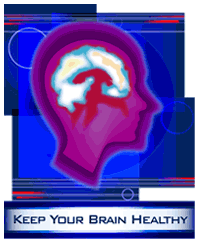 "One day at a time" is a focus accomplishment skill. Why worry about how much of the mountain is left to climb or how far we could fall when all that matters is our grip upon here and now, the next few minutes? Combining the "Law of Addiction" with a "one day at a time" recovery philosophy is all that's needed to remain free and keep our mind's priorities disease arrested for life.
"One day at a time" is a focus accomplishment skill. Why worry about how much of the mountain is left to climb or how far we could fall when all that matters is our grip upon here and now, the next few minutes? Combining the "Law of Addiction" with a "one day at a time" recovery philosophy is all that's needed to remain free and keep our mind's priorities disease arrested for life.
The greatest unsolved mystery is why after having successfully quit for 5, 10 or even 30 years, that it normally only takes a single lapse in judgment - using on just one occasion - to trigger full and complete relapse. To quote from a study released on May 16, 2011, "Nearly all smokers who lapse experience a full-blown relapse."
What makes our disease permanent? Did years of using somehow burn or etch permanent dependency tracks into our brain? Does new nicotine somehow turn on our addiction switch? Once the brain restores natural receptor counts (down-regulates), is some record kept of how many receptors there once were? Or, does one powerful hit of nicotine simply awaken thousands of old memories of an addict having satisfied "wanting" for more?
Frankly, science doesn't yet know. What it does know is that it's impossible to fail so long as all nicotine remains on the outside. There was always only one rule, no nicotine, just one hour, challenge and day at a time. The next few minutes are yours to command and each is entirely do-able. Baby steps to glory. Yes you can!
In your mind, see and treat that first hit of nicotine as if the survival rate is zero. None of us are stronger than nicotine. But then we don't need to be as it is simply a chemical with an I.Q. of zero. It cannot plot, plan or conspire, and contrary to the teachings of the UK's leading cessation educator (whose lessons are otherwise high quality), there is no demon or monster dwelling within us. Our most effective weapon against nicotine is and always has been our vastly superior intelligence, but only if put to work.Nicotine Replacement Products
The key to nicotine dependency recovery is not in dragging out the up to 72 hours of natural detox by toying for weeks or months with gradual nicotine weaning schemes or other creative means to chemically stimulate brain dopamine circuitry. The nicotine replacement therapy (NRT) industry want smokers to believe that a natural poison is medicine, that its use is therapy, and that it is somehow different from the tobacco plant's nicotine molecule.
Truth is, the pharmaceutical industry buys its nicotiana from the exact same growers as the tobacco industry. They want us to believe that double-blind placebo controlled studies proved that NRT doubles a cold turkey quitter's odds of quitting and that only superheros can quit without it. Truth is, their studies were not blind as claimed, and did not involve quitters who wanted to quit cold turkey. Truth is that once again this year, out here in the real world, that more ex-users will quit cold turkey than all other quitting methods combined.
Here are a few facts that those selling creative nicotine delivery devices would rather you not know:
Placebo controlled NRT, Zyban, Chantix and NicVax clinical studies were not blind as claimed and thus have no foundation in science. Think about it. You cannot hide the presence or absence of withdrawal from users with significant quitting histories, who have become experts at knowing exactly how withdrawal feels. A 2004 review found that NRT studies suffered from wide-spread blinding failures (May 2004). A 2009 study by the inventor of the nicotine patch found that 4 times as many study participants randomly assigned to wear the placebo nicotine patch correctly determined their group assignment as guessed wrong. Placebo controlled quitting product clinical trials do not measure "efficacy," but frustrations.
A nicotine smoker's natural odds of quitting for six months, entirely on their own, without any products, procedures, education programs, counseling or formal support is roughly 10% (June 2000).
Those using the over-the-counter (OTC) nicotine patch or gum as a stand-alone quitting product have about a 7% chance of quitting smoking for six months (March 2003).
Up to 6.7% of OTC nicotine gum quitters are still chronic users of nicotine gum at six months (November 2003). The math makes you wonder if any gum users actually break free from nicotine while chewing it (May 2004).
36.6% of all current nicotine gum users are chronic long-term users (May 2004).
Studies suggest that you truly would have to be a superhero to quit while using the nicotine patch if you'd already attempted using it once and relapsed. The only two patch user "recycling" studies ever conducted both show that nearly 100% of second-time nicotine patch users relapse to smoking nicotine within six months (April 1993 and August 1995, see Table 3).
The vast majority of long-term ex-smokers quit entirely on their own without resort to any product, procedure or program of any kind including hypnosis, Zyban, Chantix, Champix, acupuncture, magic herbs, laser therapy, or the nicotine patch, gum, lozenge, spray, or inhaler.
The only long-term competition between the nicotine patch and Chantix/Champix produced a statistical draw in the actual percentage of participants still not smoking at both six months and one year (February 2008). If so, why risk serious injury or death using Chantix or Champix? Here in the U.S., as of May 19, 2011 the Food and Drug Administration had received 272 reports of completed suicides by Chantix users, Chantix was ranked first among all prescription drugs in reported deaths (more than twice any other drug), and the total number of U.S. reported adverse drug events of all severity surpassed 35,000, with roughly 10,000 of those being serious, disabling or fatal.
Education, understanding, new skills and some form of ongoing quality support can easily triple your odds of success.
Those who refuse to allow any nicotine back into their bloodstream have 100% odds of remaining nicotine free today! (Today, Tomorrow & Always!).
Education Is a Quitting Method
Is it possible to become so educated and motivated that the deep inner mind no longer sees ending nicotine use as a threat, so much so that the body's emotional fight or flight anxiety alarms hardly ever get sounded? Roughly half of quitters report that recovery was far easier than expected. Is it possible to so embrace coming home that fears evaporate and it feels like a cake-walk?
Did you know that unplanned attempts, which avoid accumulation of self-induced fears, are up to 2.6 times as effective as planned attempts?
Why wait! Watch or listen to WhyQuit's free counseling sesssions or grab one of our free quitting ebooks and jump in the pool. The next few minutes are all that matter and each is entirely doable. It may not always be easy but it is simple. There was always only one rule ... no nicotine today!
John R. Polito
You must be a registered user to add a comment. If you've already registered, sign in. Otherwise, register and sign in.
Nicotine Addiction 101
Nicotine Addiction 101
-
Helping Adult Quit
13 -
Helping Child Quit
11 -
Longtime Quit
879 -
Preparing to Quit
275 -
Quitting Chewing
17 -
Quitting Medicinal Nicotine
15 -
Quitting Smoking
363 -
Quitting Tobaccoless Pouches
10 -
Quitting Vaping
174 -
Recently Quit
431 -
Staying Quit
172 -
Trying Again
172 -
Undecided
19
